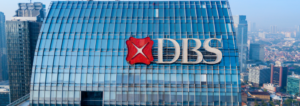Organisational change after COVID-19: What is HR's role?
- 5 Min Read
How will organisational change take place in the aftermath of the coronavirus pandemic, and what will HR’s role be in making it happen? By Dawn Smedley, Culture and Engagement Director, WorkBuzz.
- Author: Dawn Smedley
- Date published: May 14, 2020
- Categories

I strongly believe that change will be viewed in a different light once we get through the other side of this crisis. Over the last few weeks, I’ve spoken to over 100 companies of all shapes and sizes, across a variety of sectors. The one constant is the vast amount of change, disruption and upheaval that has taken place in such a short space of time. This includes change projects which would have taken months or even years to come to fruition in a pre-Covid19 world, such as:
- Rolling out flexible working in a matter of days
- Converting ITU wards to cope with quadruple the bed capacity with enough ventilators and PPE to keep patients alive and staff safe
- Task-force teams established with representation from across the business to enable quick decision-making and action
- Repurposing hotels and conference centres into hospitals
- A six-month Skype for Business roll-out accelerated and implemented within a matter of days
- Huge recruitment screening and interviewing projects managed remotely via video interview
If you’d have asked me before what matters when it comes to any kind of change, be it cultural or organisational, I would have always said it’s about communicating the ‘why’. I still believe this today. What we have seen in the last eight weeks is such a compelling example of a ‘why’ that it has required no explanation. Hearts and minds have been automatically targeted – we have a focus and that has had a knock-on effect on our mindset. It has truly brought people together in ways we probably never even thought of before.
We have seen more innovation, more productivity, faster decisions, more collaboration, less process, less hierarchy, more empathy, better conversations and more meaningful interactions with the people around us. We have had to stop, take stock and evaluate what really matters, to appreciate the simple things around us. It has shown us what is truly possible
So, surely, we can’t go back to the way things were before. Surely, we owe it to ourselves, to our colleagues, to the organisations we work for to create a new normal where we embrace this. It is about making changes that are needed to solve a problem. It is not about picking up the culture that we had before and making sure it fits to the culture norms of the present. Maybe, just maybe, the culture was not where it needed to be anyway.
It’s about listening to your people to understand what problems need fixing, but also to capture all the ideas out there that are just waiting to be found if you ask the right questions and give people a voice. In our COVID-19 pulse surveys, we have really begun to see the focus shift towards a genuine concern and interest around employee mental health and wellbeing.
My hope is that we can see this trend continue into other areas like diversity and inclusion. All of us will think and feel differently after this and as we prepare for our world to open up again, people are going to come back to work with a different mindset. We have all had a glimpse of how life could be different, and we need to embrace this. Leaders need to embrace this and resist the temptation to revert to the old ways of working, to truly see this as the opportunity that it is, and to not underestimate the impact the pandemic will have on organisational culture.
A lot of the context for this article comes from a conversation with Laura Codling, Head of Strategic Resourcing at the St Helens & Knowsley Teaching Hospitals NHS Trust. As a trust they continue to be on the frontline of this pandemic, employing more than 6,500 people. For me, one of the huge take-aways from our conversation concerned the Trust’s ‘Pandemic Promises’. They have an image of a rainbow on display in their office with over 70 ‘promises’ written on it; statements concerning what they will stop doing, start doing and continue doing after all this has ended.
This is how we should view change moving forward: what is working, what is not and what problem does it solve? The aim is to make sure we capture the thoughts and feelings of everyone, so this opportunity is not forgotten. We need to stop being clinical about the process of the change itself and realise that we have seen changes happen in the last few weeks that normally would have taken years.
When we think about change moving forward, we should look back on this period, knowing what is possible and keeping things simple by working out:
- What problem does this change solve?
- What difference does it make?
- Is this aligned to our purpose/values?
- Have I got the right influencers involved?
- How do I capture employee voice quickly to inform the strategy/approach/ensure buy-in? (short pulse surveys work well!)
- How to be ambitious with your timeline – if this crisis has shown us anything, it is that process gets in the way! Set clear goals and hold people accountable to them
- How to always bring it back to the ‘why’, the hearts and minds piece, and the story
I have always believed strongly in capturing hearts and minds and connecting to the ‘why’. To me, this is what has enabled such unprecedented amounts of change to unfold in the last few months. As a world, we have seen what is possible, so let’s be brave and embrace the opportunity.





